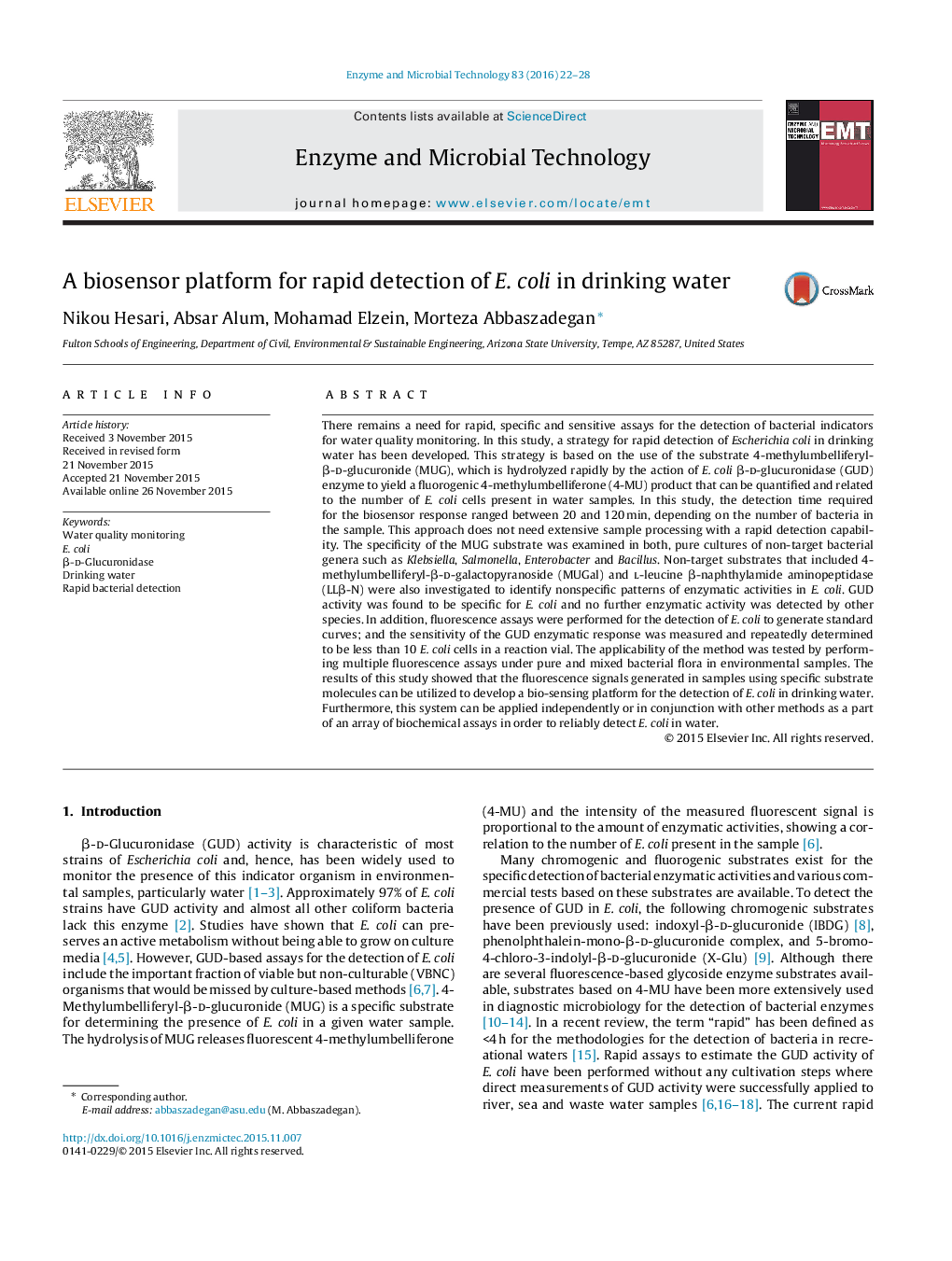| Article ID | Journal | Published Year | Pages | File Type |
|---|---|---|---|---|
| 16834 | Enzyme and Microbial Technology | 2016 | 7 Pages |
•A strategy for rapid detection of E. coli in drinking water has been developed.•MUG based assay has been integrated in a biosensor platform for E. coli detection.•The detection time required for the biosensor ranged between 20 and 120 min.•The sensitivity of the assay was established to be 10 E. coli cells in a reaction.•The method is applicable for E. coli detection in environmental water samples.
There remains a need for rapid, specific and sensitive assays for the detection of bacterial indicators for water quality monitoring. In this study, a strategy for rapid detection of Escherichia coli in drinking water has been developed. This strategy is based on the use of the substrate 4-methylumbelliferyl-β-d-glucuronide (MUG), which is hydrolyzed rapidly by the action of E. coli β-d-glucuronidase (GUD) enzyme to yield a fluorogenic 4-methylumbelliferone (4-MU) product that can be quantified and related to the number of E. coli cells present in water samples. In this study, the detection time required for the biosensor response ranged between 20 and 120 min, depending on the number of bacteria in the sample. This approach does not need extensive sample processing with a rapid detection capability. The specificity of the MUG substrate was examined in both, pure cultures of non-target bacterial genera such as Klebsiella, Salmonella, Enterobacter and Bacillus. Non-target substrates that included 4-methylumbelliferyl-β-d-galactopyranoside (MUGal) and l-leucine β-naphthylamide aminopeptidase (LLβ-N) were also investigated to identify nonspecific patterns of enzymatic activities in E. coli. GUD activity was found to be specific for E. coli and no further enzymatic activity was detected by other species. In addition, fluorescence assays were performed for the detection of E. coli to generate standard curves; and the sensitivity of the GUD enzymatic response was measured and repeatedly determined to be less than 10 E. coli cells in a reaction vial. The applicability of the method was tested by performing multiple fluorescence assays under pure and mixed bacterial flora in environmental samples. The results of this study showed that the fluorescence signals generated in samples using specific substrate molecules can be utilized to develop a bio-sensing platform for the detection of E. coli in drinking water. Furthermore, this system can be applied independently or in conjunction with other methods as a part of an array of biochemical assays in order to reliably detect E. coli in water.
